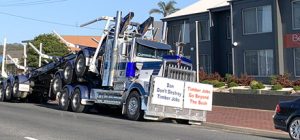So much is happening, and the scene is changing daily from so many different directions. It can be difficult to keep up, but here we go. It is clear the Coronavirus, or perhaps more accurately the COVID-19 virus, cannot be ignored by Australia’s timber industry. By Bruce Mitchell
While the effects of the virus on Australia are limited so far, to a relatively small number of cases and increased travel restrictions, it is rattling New Zealand’s timber industry.
Timber bound for China, New Zealand’s biggest market, is sitting on wharves across the islands going nowhere.
Regular weekly meetings with forestry sector leaders are being held to monitor the impact and identify how the sector can be supported.
New Zealand exporters report that while China’s ports remain open, ports are at capacity with an inventory in excess of 6 million cubic metres, with limited room to stockpile further logs.
China is prioritising clearing essential goods such as food and medical supplies and it is likely to take some time for log stockpiles to reduce.
Obviously the flow on effect is that harvesters and forestry companies are reducing staff hours given a decision to reduce harvest targets, and in some cases are even laying off staff.
Australia, it would be thought, is a long way from that situation, but it would be unwise in the extreme for the industry here to take its eyes off the ball.
Neither can the Bob Brown Foundation’s “win” in the in the Hobart Magistrates Court this week be ignored.
It will give the foundation – indeed all forest protestors Australia wide – renewed strength to increase its disruptive protest activities in the forests of Tasmania and beyond.
It seems Tasmania’s Work Health and Safety Regulator tried to do the right thing, but in all the wrong way.
Firstly, it attempted to ban the foundation from protests in the forests because of the perceived risk to forest workers going about their job.
And it threatened penalties ranging from $100,000 to $500,000.
The foundation was never going to take that laying down. Of course, it immediately appealed the decision, and won.
The regulator lifted the ban and did not seriously fight the appeal. It saw the writing on the wall very clearly, once it was pointed out to them.
Simply put, it couldn’t do what it wanted to in the way in which it wanted to do it.
Its legal representative in court, Sarah Kay, conceded the grounds of the notice were too wide and that when asked how the protestors activity was “unsafe” couldn’t give a clear answer.
Case closed; however, the Deputy Chief Magistrate Michael Daly may have given the regulator some wriggle room for the future when he agreed that the “prohibition notice is unjustifiably wide”.
Maybe the magistrate was saying that a court in the future may look more kindly on a better thought-out, better executed attempt and stopping the foundation.
Watch that space, perhaps.
The New South Wales government’s Koala State Environment Planning Policy should not be ignored either.
It slipped through the policy just before Christmas, and then the Guidelines late yesterday for what has been described as limited time for public consultation.
Affected landowners across up to 10 million hectares of private property will not get access to the “Draft” Koala Habitat Protection Guideline until sometime this afternoon.
In effect, the guidelines will result in wide-spread lockup of forests across NSW, but with so little known until access is granted to the guidelines later today, who knows?
The NSW Upper House inquiry into koala populations and habitat is due to report back to NSW parliament by June 15.
So, why rush the guidelines through?
This is one fight that will take some clever footwork and needs to be watched.
On a more positive note, the fuel reduction argument seems to be gathering some support.
A Newspoll published in the Australian this week which found a majority of those surveyed believed insufficient hazard reduction was the main reason for the severity of the summer bushfires.
The Newspoll, published on Monday, asked the question: “Which do you think was the main cause of the severity of the recent bushfires?”
Of the more than 1500 people polled, 56% cited inadequate hazard reduction.
AFPA Chief Executive Officer Ross Hampton said the Newspoll showed the community clearly understood Australia must do more to reduce bushfire risk
Now, 56 per cent is a small number in the big picture; it’s not an overwhelming majority by any stretch of the imagination, but it’s a start.
But fuel reduction is at the core of the argument over sensible forestry management.
Hence, we have had the Opposition in Victoria launch its Fuel Reduction Saves Lives campaign, calling for increased fuel reduction on public land.
The campaign, and its simple message, is well timed and apt.
As the Nationals leader Peter Walsh said, Victorians deserve to be safe.
And it’s as easy as simply following the recommendations of the Victorian Bushfire Royal Commission formed after the Black Saturday bushfires in 2009 which recommended a target of 5% preparatory burns per year to protect people and property.
So far, the Victorian Government has successfully thumbed its nose at those recommendations. Will a similar recommendation from the Federal Government’s Royal Commission into the more recent fires have any effect? Again, watch this space.
The Victorian Premier Daniel Andrews might have got the message from timber workers in Gippsland when he and his colleagues headed to Lakes Entrance yesterday for the party’s annual caucus getaway.
Dozens of forestry workers peacefully picketing the conference over Mr Andrews’s decision to close their industry by 2030. But alas, during a visit to the fire-hit town of Buchan, Mr Andrews said he didn’t think he would have time to meet with the protesters.
He said it was too soon to say how the bushfires would affect the Government’s plans to phase out the native timber industry.






